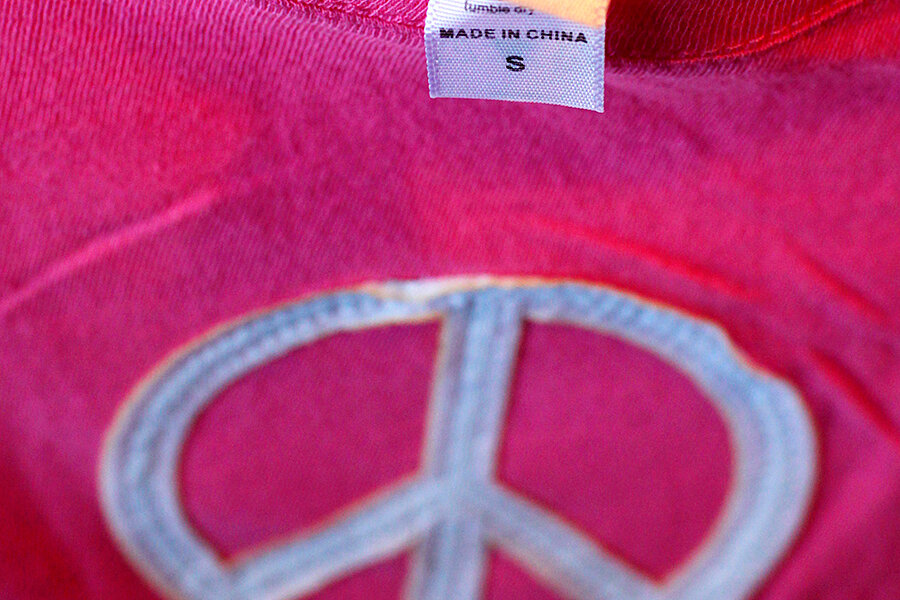Around Asia, 'Made in China' no longer means cheap or shoddy
Loading...
| Taipei, Taiwan
The “Made in China” brand has long stood for quantity not quality, for a low price rather than a top notch product.
But that is beginning to change. After decades of producing things that chip, break, stain, and freeze-up, product quality in China is quietly edging up.
From clothes to appliances to cell phones, Chinese goods are now proving to be as durable as those made in Japan and nearly as precise as those emerging from high-tech hubs like Taiwan.
In the same way Japan moved from making toys in the 1960s to mastering fuel-efficient cars and consumer electronics by the 1980s, China is closing the quality gap. And this new edge is starting to be ripple outwards in Asia's dynamic economies.
Just ask John Yen, manager of a tech manufacturer in Taipei, about Chinese quality. His voice deepens and he says, “Let me tell you” – the local lingo for “Yes, we’ve got a situation.”
Mr. Yen says the days of easily outpacing China in “face to face” product quality confrontations are over. “They’ve got more resources, more people and the market is bigger. This is absolute and you can see it,” says Mr. Yen, owner of Ndevr Corp that makes flash drives and data storage cards.
Mixture of causes for better quality
That China's quality has improved is increasingly a consensus view in Taiwan.
“In the past few years, the visibility and market share of Chinese brands have come up,” says Andrew Tsai, economist in Taipei with KGI Securities. “Taiwan’s brands have suffered some market share loss, and there’s definitely an impact from China.”
Behind this shift is the intense pressure among Chinese manufacturers to compete in export markets and also to attract buyers inside China.
And the most common spur to quality is simply learning from outsiders, say analysts. Chinese firms have improved through reverse engineering and copying machines from abroad. This often occurs via joint ventures with foreign companies, whose expertise and technology can be adapted
Take Galanz, the largest microwave oven maker in the world. The founder bought a product blueprint from Japan in 1990 and began producing ovens. Soon he persuaded foreign brands to set up their production lines in his factory, taking advantage of China's cheap labor. Galanz engineers watched how the foreign firms did things, copied them, and it was not long before the company was making microwaves for foreign brands.
In joint ventures, technology transfer is often mandatory. The Chinese government has long insisted that nuclear power plant manufacturers such as Westinghouse or Electricite de France share their technology in return for contracts in China. Engineers have used it as a foundation for their own technology, and now China is selling nuclear plants to the UK.
Factory workers learn quickly
Chinese factory workers at all levels continue to up their game.
Staffers and mangers in the two Chinese factories of Hong Kong-based TAL Group, a garment manufacturer, are better educated and learn more quickly than their counterparts in his factories in Malaysia, Vietnam and Indonesia, according to company head Roger Lee.
“Each time you change style, your efficiency drops because the workers have to learn to adapt,” Mr. Lee says. “Chinese sewing staff learn very well and fast.”
Like its East Asian peers, China began exporting when its own markets were undeveloped. Faced with global demands for consistent quality, factories had to up their game and could outpace countries like India that initially sold mostly to a domestic market.
China’s overseas investments rose from a few billion dollars in 2006 to $102.9 billion last year.
“Nobody cares whether it’s a Chinese brand or a foreign brand,” says Zhao Xiande, a professor at the China Europe International Business School in Shanghai. “They’re all made in China anyway, and quality-wise there is not really any noticeable difference.”
Businesspeople in Taiwan are now exploring niche product lines or ways to cooperate with Chinese companies. That may mean more weight given to high-end cloud computing systems or specializing in hardware parts that are scarce in China.
In South Korea, management consulting firm McKinsey & Co. counseled through an insight paper in 2010 that, “It is time for South Korea to reconsider its mindset and think about building mutually cooperative relationships with China, rather than seeing China as a less-than-equal partner.”
Staying ahead of China is a nonstop race here. TeamChem Materials, a Taiwanese manufacturer, has spent the past eight years developing an especially thin mobile phone film for producers in China. It’s a fifth of the price of a similar product from TeamChem’s closest competitor in Japan.
The company is paired with a Chinese contractor and its leaders could see the quality rising from the Chinese factories. So the Taiwanese now figure they must soon adapt.
“Traditionally Taiwanese will say we’re better than mainland China, but from what I’ve seen that’s not the case and in some cases quality is better in China,” TeamChem chief executive Todd Yeh says.
Staff writer Peter Ford in Beijing contributed to this report.







